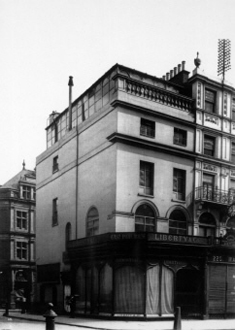Product Description
Archibald Knox / Liberty & Co. Square biscuit box with cover 1903-05


ARCHIBALD KNOX (1864-1933) UK
LIBERTY & CO. London
Square biscuit box w/cover 1903-05
Pewter with stylized blossom and leaf motif on each side
Marks: “Tudric” model no. 0237, MADE IN ENGLAND
Illustrated: Archibald Knox, ed. by Stephen A. Martin, London:Academy Editions, 1995, p. 83.
H: 5” x W: 4 3/8” square
Archibald Knox / Liberty & Co. Square biscuit box with cover 1903-05
WILHELM KÅGE (1889-1960) Sweden
GUSTAVSBERG Gustavsberg, Sweden
“Nude” Farsta bowl c. 1940
Glazed stoneware with hand inscribed sgraffito decoration of a nude
Marks: Kage, Studio Gustavsberg; FARSTA
Dia: 8″
